Group Riding: Techniques
How do I ride in formation?
Riding in a group is generally acknowledged to reduce the required effort by up to 30%. Consequently, riding in a group, with all riders taking turns on the front, allows the group to go significantly faster and so to get to the coffee stop more quickly!
Sounds great (especially the coffee bit). So how do I do it?
We use three basic formations. Two-Up is more suited to recreational riding and the Paceline and the Chain Gang are more suited to training and racing.
Two-Up (Default Club Ride Formation)
This comprises two parallel lines. Pairs of riders ride alongside each other as close to the riders in front as they are both comfortable with. Periodically we change the riders at the front so that they can shelter from the wind and so that all riders can share the effort.
To change riders at the front of the group, each of the members of the group will, essentially, shift their position in the group anti-clockwise. To do this, one of the riders at the front will shout “CHANGE ONE!”. When he or she does so:
● the rider at the front on the left hand (inside) lane will ease his or her pace slightly so that the rider at the front in the right hand (outside) lane can move to the left and occupy his or her position in the group (but only when wheels are clear!);
● the left hand rider should shout “clear” to indicate when it is safe for the right hand rider to move across;
● the rider behind the rider who was at the front of the right hand (outside) line will move forward so as to be alongside the rider who is now at the front of the left hand (inside) lane; and
● the rider at the back of the left hand (inside) lane will move right to join the end of the right hand (outside) lane.
Riders may also shout “CHANGE TWO!” in which case every rider moves two places.
Chain Gang
As with the Two-Up this comprises two parallel lines. And as with the Two-Up riders rotate position in an anti-clockwise direction.
So what’s different?
Well, this time the riders’ changes of position are constant, fluid, and are not announced by verbal signals. Essentially, the right hand (outside) lane moves about 1-2 kph faster than the left hand (inside lane). Consequently:
● when a rider reaches the front of the right hand (outside) lane he or she moves to the left to join the front of the left hand (inside) line and then eases his or her pace slightly; and
● when a rider reaches the back of the left hand (inside) lane he or she accelerates slightly and moves right to join the back of the right hand (outside) line.
Sounds complicated. Any tips?
Yes. A couple:
● Accelerate when at the back but not when at the front: When moving left to join the front of the left hand (inside) line, do not accelerate – Rely on the fact that the left hand (inside) line is moving slightly more slowly to allow you to do so. This is really important! If you don’t do it the Chain Gang will get faster and faster until it breaks up.
● Pull all the way through: Keep your pace until you are completely off the front. Another rider is moving up on the outside and you don’t want them to have to swerve to avoid you as you slow down. Doing that will make you very unpopular!
● Be subtle: When moving left or right keep your lines shallow – A sharp change of direction is likely to move you into the wheel of the rider ahead of, or behind, you (depending on which way you are moving).
● Relax: Look up, and don’t just focus on the wheel ahead. Doing so will enable you to anticipate what is going to happen rather than react to it. And do try not to use your brakes. Yes, really!
● Remember, smooth is fast.
Paceline
This comprises a single line and is used in high-speed training rides and race situations. Each rider will complete a turn at the front. The length of that turn will vary depending on the speed, the general conditions (including, principally, the wind), and their fitness. They will then move to the left or to the right (depending on traffic). They will indicate they are moving off the front with an elbow flick (aka chicken wing). Flick your elbow on the side you want the group to come around you on, NOT the direction you are swinging off on. When they do so the rest of the group will maintain their original pace and direction. Having done their turn and moved off the front the first rider will then ease his or her pace slightly. This allows the rest of the group to pass and this first rider can join the back of the line.
